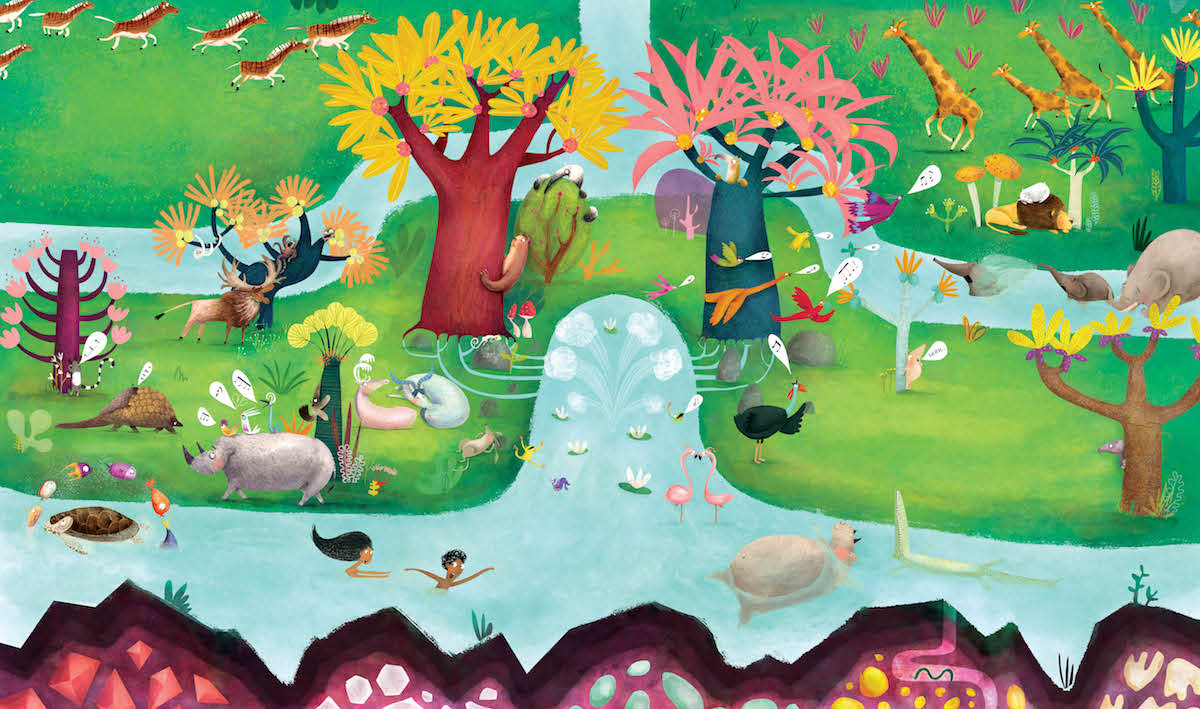
When The Good Book Company set out to produce The Christmas Promise, our first hardback children’s storybook, we knew that the illustrations would be crucial to how children would receive them. We knew that our Tales That Tell The Truth books would need to look stunning in order to keep pace with the competition at storytime.
And to this day we are grateful for how God led us to Catalina, whose elegant designs have now contributed to seven (and counting) more books in a series that has been more popular than we could have ever imagined.
Given that her name is on the front of every one of these books, we thought you might like to know a bit more about her...
Since 2011.
Matilda.
Quentin Blake has been one of my all time favourites, especially his illustrations for Matilda. I discovered Beatrix Potter while studying in university and loved her delicate and precious watercolours. And as far as more modern day illustrators, I like Oliver Jeffers and Briony May Smith.
In picture books, illustrations play a very important role because the children at this stage are not yet fully-developed readers, so as the parent is reading the text the children are “reading” the pictures. This is why illustrations in this format are just as important as the text because they are adding extra layers of information to the words that are written on the page.
I used to help out a lot in Sunday school and it was this experience that got me involved in illustrating for children in the first place. As I was working with the little ones I realised there wasn’t much material available for children and ministry workers that was both biblically faithful and visually engaging. This nurtured in me a desire to serve the church in this way.
First comes the text, which is developed by the author alongside the editor. Once they are happy with how it reads and the message it conveys they send it over to me. I have a read and do little thumbnail sketches of ideas that come to mind for each part of the story.
Then we have a meeting with the team which is usually formed by the editor, the author (if he or she is in the country) and the designer. This is probably one of the most crucial moments for the development of the book as it is the time where we discuss and decide what scenes are going to go along with the text and how the story is going to be spaced out. Everyone’s input is crucial and we always make sure we ask for God’s guidance and inspiration before the start of each project. We really need His help because we want to make a book that is faithful and also visually up to the level He deserves.
There is always quite a lot of research and planning involved so this takes quite a bit of time. Also, we want to make sure the compositions and the characters are right and communicate the text accurately. It usually takes roughly 6 months.
I really can’t choose one! But some that stand out in my head are the heaven scene from The Garden the Curtain and the Cross where king Jesus is welcoming one of his followers in. Also I like the creation scene from God’s Very Good Idea and the terrified disciples from The Storm That Stopped.
It’s so important! I think there is much value in not just making generic characters and settings but placing them in their specific cultural and historical context gives the narrative life and makes it much more engaging and authentic.
It is often decided by the theme that runs through the story. For example, in Goodbye to Goodbyes it wasn’t appropriate to choose bright and bold colours because it is a very intimate and sensitive subject, while God’s very Good Idea needed to be an explosion of colours to communicate the diversity of God’s creation.
Definitely heaven, because it is meant to be the most amazing, breathtaking place we will ever see! I felt so daunted by the thought of approaching this drawing for a long time. Also the Garden of Eden because it took a lot of research to find the right vegetation and animals and the composition was very tricky.
This article is part of our Spark Wonder campaign. For many of us, a love of God’s word was sparked in childhood as the Bible and Christian books were read to us. We can ignite the spark of wonder in a child’s heart that will set them up for a lifetime of curiosity into all the things of God and His Word. Find out more at www.thegoodbook.co.uk/spark-wonder